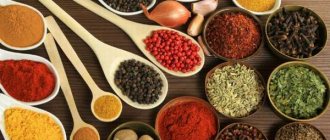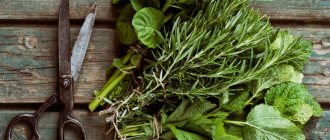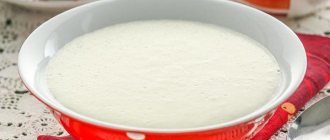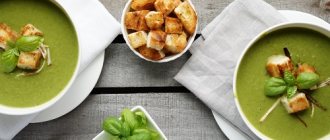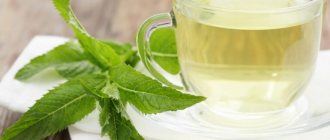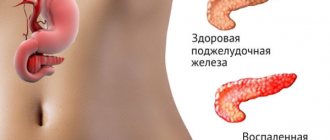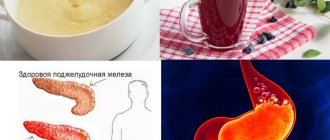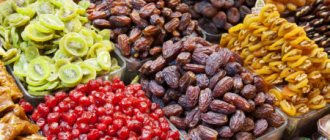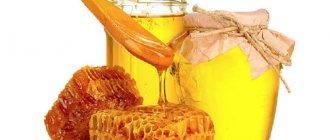Home Diseases and treatment Gastroenterology
9 Apr 2020, 15:04 Anna 1 897 No
Pancreatitis is a complex disease that forces the patient to follow a strict diet for a long time with a predominance of products containing animal protein in the menu. Considering this, eating seafood for people who suffer from this disease will be an ideal addition to their diet.
Useful properties of seafood
The most popular and very affordable for purchase in almost any store today are squid, shrimp and kelp. Seaweed contains vitamins A, B, C, D, E, R, PP, numerous vital elements, amino acids, phytohormones, and iodine.
This product strengthens the cardiovascular system, improves metabolism, removes toxic substances and heavy metal salts from the body, and provides antibacterial protection. Due to this, nutritionists recommend regularly including kelp in your diet.
Shellfish have an exquisite taste and many beneficial properties. Squid, mussels and rapana are especially rich in vitamin B12, which improves metabolism, normalizes brain activity, strengthens blood vessels and heart muscle.
- Due to the fact that they contain Omega-3 and Omega-6 polyunsaturated fatty acids, shellfish lower blood cholesterol levels and prevent the development of arrhythmia.
- Manganese, found in seafood, strengthens bones, selenium provides protection against the appearance of malignant tumors and has a neutralizing effect on carcinogens. Shellfish are also rich in iron, phosphorus, zinc, and folate.
Seafood contains dietary protein, the amount of which is equivalent to beef, but, unlike traditional meat, shellfish contain virtually no saturated fat. But it is important to purchase this product only in trusted specialized stores, since mussels can absorb toxic substances and poisonous algae, which can lead to food poisoning.
Crustaceans are widely used in cooking and dietetics. Their meat is rich in vitamins A, B12, D, C, E, PP, and amino acids. Easily digestible protein helps restore damaged tissues of internal organs, so this product is useful in cases of disruption of the pancreas.
- Crustacean meat is rich in magnesium, calcium, potassium, iron, phosphorus, fluorine, copper, selenium, zinc, and chromium.
- Seafood is very useful for people with a damaged thyroid gland, as they contain an increased amount of iodine.
- Due to the presence of Omega-3 and Omega-6, the levels of fatty substances in the patient’s blood are normalized.
- Taurine improves vision and increases the elasticity of blood vessels.
Like shellfish, shrimp and other crustaceans can absorb harmful radioactive substances, so you should be especially careful when choosing a product.
Composition and calorie content

The calorie content of one hundred grams of seafood product is 77 kcal. The main components of mussels are water 80.58 grams and protein 11.9 grams. Fat is only 2.24 grams, carbohydrates 3.69 grams.
Mussels are very rich in useful elements:
- vitamins A, B, C, E, K;
- potassium, calcium, sodium, magnesium, phosphorus, iron, copper, manganese, selenium, zinc;
- amino acids, including leucine, valine, isoleucine, tryptophan;
- fatty acids, mainly healthy essential polyunsaturated and monounsaturated acids, the percentage of saturated fats is small.
In terms of nutritional value, mussels can be compared to a chicken egg. The product contains about thirty mineral elements and almost the entire vitamin group, provitamin D3, necessary for the absorption of calcium, and enzymes that improve digestion.
In addition, mussels are rich in glycogen, which is the main energy source for the functioning of muscles and muscles. Glycogen deficiency often leads to decreased immunity.
Is it possible to eat shrimp if you have pancreatitis?
Despite the fact that shrimp are a very tasty, healthy and nutritious product, in case of gastrological problems, certain nutritional rules should be followed.
When the acute stage of pancreatitis is diagnosed, the pancreas is in an inflamed state. The first days after the attack occurs, the patient is given an intravenous solution and drug that provides nutrition. After a few days, the patient switches to a diet that excludes mechanical, thermal and chemical effects on the internal organ.
Shrimp contain easily digestible proteins and numerous beneficial elements. Seafood has a dense structure due to the chitin it contains; they may also contain radioactive substances and salts of heavy metals. Shrimp can harm a weakened pancreas, so they should not be consumed in the first month after an acute attack.
- In the chronic form of the disease, it is also not allowed to include seafood in the diet. Otherwise, the disease may worsen if the rules of the therapeutic diet are not followed.
- When the symptoms of the pathology disappear, shrimp can be gradually introduced into the menu. Seafood should be thoroughly washed, steamed and included in main dishes.
- During the period of remission, when improvement is observed, it is allowed to move away from the strict diet. At this time, doctors recommend, in addition to the main dishes, to eat shrimp, mussels, and kelp, as they contain a large amount of vitamins and minerals.
Such food will allow the body, weakened during illness, to recover faster. Since the proteins found in seafood can be absorbed better than meat dishes, this will allow damaged pancreatic tissue to recover more effectively. There are very few fatty substances in shrimp meat, which also has health benefits.
Crab sticks are prohibited for pancreatitis. As you know, they do not contain natural meat, and this product is often made from low-quality fish. Crab sticks do not contain vitamins and minerals, and manufacturers usually add flavorings and flavor enhancers, which are very harmful to the body.
Such a product, even in healthy people, can cause an allergic reaction to artificial components. In patients with pancreatitis, consumption of crab sticks leads to irritation of the pancreatic mucosa, increased synthesis of pancreatic enzymes, which causes swelling and necrosis.
The benefits of seafood for pancreatitis

Shrimp meat belongs to the group of delicacies with a balanced composition. It contains easily digestible protein compounds necessary to accelerate rehabilitation processes in the structures of pancreatic tissues. Therefore, shrimp are included in the menu of most dietary standards. The benefits of this product are explained by its rich composition, which includes the following useful components:
- iodine and iron,
- sulfur and potassium,
- zinc and fluorine,
- magnesium and a large number of vitamin complexes,
- various amino acids,
- omega-3 fatty acids and carotenoids, which have anti-inflammatory properties.
Such a wide range of useful components of shrimp helps to improve the level of functionality of the thyroid gland, and also has a normalizing effect on eye performance and improves the quality of vision. Moreover, the immune system is strengthened with regular consumption of this seafood, and the performance of the muscle-bone elements of the body and the cardiovascular system of organs improves. Some claim that shrimp meat can remove excess cholesterol.
Recommendations for eating seafood
In case of pancreatitis and disruption of the gastrointestinal tract, it is important to follow certain rules to prevent the development of complications. Any seafood should be purchased only in a specialized store from trusted sellers.
Before purchasing, you need to make sure that shrimp, squid and other seafood are fresh and of high quality. The limbs of the shrimp should be clean, without black or yellow spots, which indicates the unsuitability of the product.
In the chronic stage of pancreatitis, you should not eat any smoked or pickled seafood. During the remission period, you are allowed to eat no more than 350 g of shrimp.
If there are no symptoms of problems with the pancreas, seafood can be consumed without pureing or chopping. Shrimp are steamed, stewed or baked. The boiled product is added to omelettes, soups, and salads. To diversify the menu of a patient with pancreatitis, there are many healthy dietary recipes.
The benefits and harms of shrimp are discussed in the video in this article.
Modern opportunities make it possible to consume these seafood almost every day, but can patients with diseases of the digestive system allow themselves to do this? Are shrimp good for pancreatitis?
What is prohibited
But canned food, fatty, fried, salted and smoked seafood, as well as fish will need to be completely excluded from your diet. Caviar also falls into this list.
Shrimp are prohibited only in acute forms of the disease or during the period of exacerbation in chronic ones. During this period, the patient should be prescribed a very strict diet. The rest of the time, shrimp meat can be consumed in different forms.
The main danger that pancreatitis poses is that this disease can worsen for a variety of reasons. The main one is poor nutrition. To protect yourself from possible dangerous consequences, you should eat right for a long period, or it is better to make such a diet permanent for yourself.
Any deviation from the diet for the patient can result in an exacerbation. It is better to give up harmful smoked or fried seafood in time than to suffer from pain and general discomfort in the future.
Modern opportunities make it possible to consume these seafood almost every day, but can patients with diseases of the digestive system allow themselves to do this? Are shrimp good for pancreatitis?
Beneficial features
Shrimp are a unique delicacy gifted to people from the depths of the sea. Their meat is rich in easily digestible protein, therefore it is considered a dietary product. In addition, these crustaceans contain a huge list of:
- microelements, including iodine, potassium, calcium, iron, phosphorus, fluorine, sulfur, magnesium, zinc, sodium, chromium, molybdenum, nickel, manganese, copper, cobalt;
- vitamins such as E, C, PP, B12, A, B3, B2, B1, H;
- various polyunsaturated acids.
Thanks to this unique composition, the meat of these seafood:
- simulates the functioning of the thyroid gland;
- has a positive effect on vision;
- has a beneficial effect on the heart and vascular elasticity;
- increases immunity;
- strengthens muscle and bone tissue;
- helps remove cholesterol from the blood.
Seafood for acute and chronic stages of the disease
Shrimp meat has a rather dense structure, which makes its use both during the period of acute pancreatitis and at the peak of exacerbation of the chronic form undesirable.
At this time, patients are recommended to eat food that can provide the necessary mechanical sparing of all organs of the digestive system. You can remember about the seafood delicacy only after laboratory parameters have been brought back to normal and clinical symptoms have been persistently relieved, while pureed meat of poached or boiled shrimp can be added to vegetable and cereal dishes, quenelles, and soufflés.
It must be taken into account that the maximum daily portion of these seafood during the rehabilitation period should not exceed 350 g, provided they are satisfactory tolerable.
In the phase of stable remission of pancreatitis, the body, weakened by illness and diet, needs to replenish the dietary protein necessary for:
- balanced production of pancreatic enzymes and their inhibitors;
- intensive counteraction to sclerotic changes;
- effective tissue restoration of the affected organ.
Since pancreatitis is an inflammation of the pancreas, when it worsens, patients need to follow a diet. This allows not only to alleviate the symptoms of the disease, but also to completely get rid of it. Prawns included in the menu, if taken in moderation, will only bring benefits to the body.
Author : Zagorodnyuk Mikhail Petrovich, especially for the site Moizhivot.ru
Video about the benefits and harms of shrimp
Pancreatitis is a disease of the pancreas, in which it is necessary to follow a diet or a gentle diet so as not to provoke deterioration and exacerbation.
In this regard, many people suffering from pathology ask the question: is it possible to eat shrimp if you have pancreatitis? Most are also interested in what seafood is allowed for this pathology.
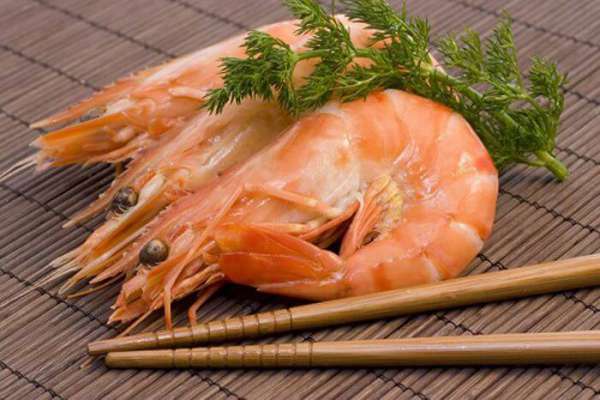
Benefits of shrimp
Shrimp are allowed in almost any therapeutic diet, since their meat contains little fat and protein, which is easily absorbed by the body. In addition, the product contains a lot of vitamins, as well as iodine, iron, potassium, magnesium and other trace elements that support the functioning of internal organs and muscles.
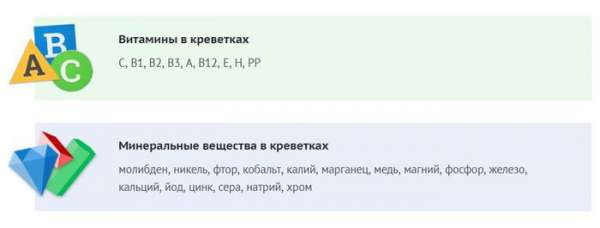
You can prepare many healthy and tasty dishes from shrimp. They can be steamed, boiled and baked, which is especially important during a diet. In addition, the calorie content of the shrimp themselves is very low.

Shrimp for acute pancreatitis
Is it possible to eat shrimp if there are inflammatory processes in the internal organs? Shrimp meat is well absorbed by a healthy body, however, during periods of exacerbation of inflammation of the pancreas, it is better to avoid them, since the internal organs in this case will work to the limit, which can cause a deterioration in the patient’s condition. As soon as the main symptoms of an exacerbation can be stopped and a lasting result from treatment can be obtained, they can begin to be administered in small portions.
In case of a disease such as pancreatitis during the recovery period, shrimp can help in treating the disease. This is due to the following properties of the product:
- Meat protein, which has high nutritional value, has a beneficial effect on the condition of the pancreas.
- The product can significantly improve the nutritional value during a diet.
- Omega-3 fatty acids and astaxanthin can reduce inflammation.
You can achieve the greatest safety and quality of the product if you boil or stew the shrimp. It is also useful to add pureed meat to porridge and vegetable dishes.
What foods should you not eat?
All seafood is high in protein - about 15-20 g per 100 g, which contains essential amino acids and is easily digestible in the human digestive tract. In turn, one of the conditions of the diet for pancreatitis is the enrichment of dishes with protein, mainly of animal origin, so seafood from this point of view is very valuable and beneficial for patients.
In addition, seafood is rich in various minerals and vitamins, among which the most important are the following:
- Iodine - in most regions of Russia (located far from the sea) there is a lack of iodine in soil and water, and therefore in food products. Adding seafood to the diet 2-3 times a week helps to avoid severe iodine deficiency, improves immunity and helps normalize metabolic processes.
- Iron, which is well absorbed, prevents the development of anemia and strengthens the body weakened by disease.
- Fat-soluble vitamins (D, E, A, K) that are rarely present in sufficient quantities in our daily diet. Fat-soluble vitamins, among other important functions, have anti-inflammatory activity and the ability to protect cells (including the pancreas) from the harmful effects of free radicals and other dangerous compounds.
Seafood is also low-calorie and low-fat, and the fats in them are polyunsaturated fatty acids. Omega-3 and omega-6 fatty acids are called “healthy fats” because they normalize cholesterol levels in the blood and have a positive effect on the cardiovascular system.
Despite all the undoubtedly beneficial qualities, the issue of including seafood in the diet of patients with pancreatitis is controversial. The fact is that seafood can also have an undesirable effect on the inflamed and damaged pancreas due to the following factors:
- High content of extractive substances that stimulate gastric and pancreatic secretion.
- The ability to cause the release of histamine, a mediator of allergy and inflammation, which increases swelling of the pancreas and aggravates the pain syndrome in pancreatitis.
- High allergenic activity.
- Quite dense, elastic structure of the meat of shrimp, squid, shellfish and other marine life. Without good heat treatment and additional grinding, such a structure makes it difficult to digest and absorb protein and can provoke an exacerbation.
- Artificially farmed seafood (mussels, king prawns) and seafood obtained in environmentally unfavorable areas may contain hazardous substances: mercury, arsenic, heavy metal salts, etc.
All seafood is not recommended to be included in the diet of patients during the acute phases of the disease, when it is necessary to adhere to a diet in compliance with the principles of mechanical and chemical sparing. But seafood, due to its dense structure and high extract content, does not correspond to these principles.
It is allowed to introduce seafood into the diet only when the acute symptoms of the disease subside - when abdominal pain, nausea and vomiting stop - no earlier than 3-4 weeks from the onset of the attack. Shrimp in crushed form is introduced first - puree soups, additives to quenelles and cutlets, soufflés. It is not advisable to use other seafood during an exacerbation of the disease.
During the remission phase of chronic pancreatitis, all seafood can be used - shrimp, squid, octopus, mussels, scallops, etc. They are allowed in boiled and baked form - as a main dish and for salads; you can make puree soups with them, add them to risotto, pasta, etc.
If you have pancreatic diseases, it is recommended to abstain from any processed foods. Such products include crab sticks, which are popular among buyers.
Eating crab sticks for pancreatitis is extremely undesirable. The point is the composition of the product: it contains food coloring, preservatives, thickeners, sugar and salt.
In addition, there is no crab meat itself in crab sticks. It is replaced with minced white ocean fish. Often this minced meat turns out to be of low quality.
You should also refrain from eating rolls and sushi with seafood. These dishes are consumed with soy sauce and ginger, which will irritate the digestive tract. It is not recommended to eat both seafood and fish on the same day. You need to give preference to one thing.
It is not recommended to eat seafood during the recovery period from acute pancreatitis. They are introduced into the diet when the patient’s condition stabilizes.
To finally decide on seafood whether you can eat it or not, you should watch your body’s reaction. After eating, there should not be a feeling of heaviness in the stomach, pain in the left hypochondrium, radiating to the back, nausea and vomiting - these are symptoms of an incipient attack of pancreatitis or cholecystitis.
Seafood is useful both for people without health complaints and for patients with pancreatitis. Seafood improves the functioning of the pancreas. Seafood contains a large amount of proteins. Their quantity exceeds that present in meat and offal.
Seafood is considered a dietary product. 100 grams contain from 50 to 130 calories. The composition also contains a sufficient amount of polyunsaturated fatty acids. By consuming such food, you can significantly reduce the risk of developing malignant tumors.
Seafood has a positive effect on the activity of the pancreas
Seafood lowers blood cholesterol levels. Marine products are also a source of vitamins and microelements necessary for the normal functioning of the human body. Contains:
- vitamins A and E;
- B vitamins;
- iodine;
- calcium;
- iron;
- phosphorus;
- zinc;
- selenium.
Each seafood product has its own benefits.
Seafood helps reduce bad cholesterol in the blood
Shrimps
All of these components have a beneficial effect on the functioning of the cardiovascular system. Regular presence of the product in the diet helps speed up metabolic processes.
Squid
Just like shrimp, squid contain a sufficient amount of protein. In addition, the necessary vitamins and microelements are present. The seafood product is popular among people who want to increase the percentage of muscle mass.
Squid contains B vitamins. With the regular presence of the product in the diet, metabolic processes accelerate. This also allows excess fluid to leave the body.
Eating squid helps build muscle mass
Despite its low cost, mussels are in no way inferior to oysters and contain fewer calories. The meat contains:
- vitamin B12;
- iron;
- vitamin A and E;
- phosphorus;
- potassium;
- zinc;
- selenium.
The mussel has no negative qualities. Doctors recommend including it in your diet at least once a week. Even in this quantity, positive changes will occur in the body.
Seafood is useful for pancreatitis because it is quickly absorbed in the gastrointestinal tract. The main positive qualities of seafood on the human body with pancreatic disease are described in the table.
| Iodine | All seafood contains iodine. For people living far from the sea, this component is in short supply. It is enough to add seafood twice a week to make up for the deficiency. |
| Iron | The iron present in the composition helps strengthen the body's protective functions, which is extremely important during the course of the disease. |
| Fat-soluble vitamin complexes | Fat-soluble vitamins are also rarely present in the daily diet. It is important to replenish the deficiency in order to have an anti-inflammatory effect on the body and protect healthy cells from negative influences. This can be done using seafood. |
For pancreatitis, it is recommended to consume low-fat fish. They can be:
- stew;
- boil;
- use for preparing jellied dishes.
If you have pancreatitis, you should choose only fresh seafood to eat.
Patients with pancreatitis can add seafood to their diet:
- mussels;
- shrimp;
- scallops;
- squid;
- cod;
- perch;
- pike;
- flounder.
Seafood products can only be purchased in specialized stores. Otherwise, the quality remains in doubt. Only fresh seafood can be included in the diet. They are consumed only in moderation. Typically up to 300g is recommended.
Shrimp are permissible only in cases of protracted disease. Before use, they are boiled in slightly salted water. After this, the product is ground using a blender. Consumption of this mixture should be moderate. Usually doctors recommend no more than 150 grams.
Nutrition for pancreatitis should be balanced. It is important to include other dishes in addition to seafood. Only through this will it be possible to improve health and speed up the healing process.
Squid
Shrimp for chronic pancreatitis
To restore pancreatic tissue, you need a large amount of light and high-quality protein. However, shrimp can also be added to the main diet during the period of remission. The maximum amount is 350 grams of product per day.
You can cook shrimp almost any way you like. However, fried foods should be avoided. The best option here would be pureed shrimp, boiled, stewed, or as a soup base or an addition to a vegetable or cereal side dish.
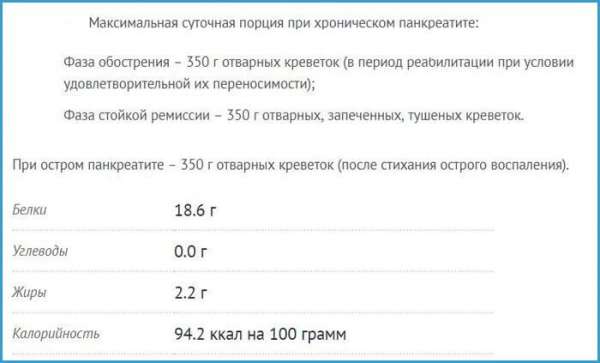
Seafood and chronic pancreatitis
When a stable period of pancreatic pathology in the pancreatic cavity is established, the consumption of almost all types of seafood is allowed, among which the greatest nutritional value is:
- squid and shrimp;
- mussels and octopus;
- seahorses and so on.
The consumption of these seafood is allowed only in boiled, stewed and baked form. They are recommended to be added to a variety of salad recipes, risotto, vegetable side dishes, paella, or as an independent dish.
It is important to remember that even during the period of establishing a long-term stable remission of the patient, it is not recommended to eat seafood:
- canned, salted and smoked;
- with the addition of hot and sour dressings, as well as sauces based on acetic acid or lemon juice;
- in the form of sushi and rolls.
It is recommended to give preference to fresh or freshly frozen seafood. When cooking, it is very important to observe the time intervals necessary to impart softness to the prepared dish during boiling, stewing, or baking.
Other seafood allowed for pancreatitis
In both acute and chronic cases of pancreatitis, seafood is not recommended to be consumed during the period of exacerbation. In this case, it is advisable to give preference to lean fish. So, you can safely include in the diet menu:
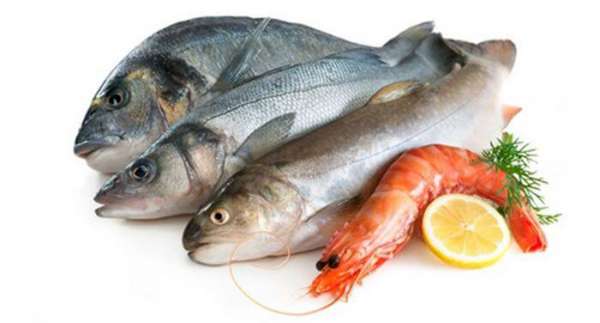
Seafood for pancreatitis can be steamed, stewed, boiled, baked. You can also make cutlets and meatballs without adding oil.
Mayonnaise and other harmful and fatty dressings are often added to squid salads. Squids themselves do not harm people suffering from pancreatic inflammation (only during remission), however, such dishes should be excluded from their diet.
You should also eat crab sticks with caution, as they contain a large amount of harmful additives that improve the consistency and taste. Moreover, despite the fact that they are made from minced fish, all useful substances are removed from the main ingredients during the production process. In addition, in the cheapest crab sticks, regular fish protein is replaced with soy protein to reduce cost, and it is contraindicated for pancreatic diseases.
How to choose seafood for pancreatic diseases?
When choosing seafood, the first thing you need to pay attention to is the fat content. In this regard, it is dangerous to purchase so-called sea cocktails, since they may contain harmful and even dangerous ingredients for patients with pancreatitis and cholecystitis.
When purchasing finished products and semi-finished products (for example, fish cutlets, crab sticks, minced fish), you need to pay close attention to the composition and nutritional value. If the product contains too high a percentage of fat or vegetable protein, it is better to refrain from purchasing. It is also important to pay attention to whether it contains any components prohibited during the diet. Battered and deep-fried shrimp can be dangerous.
It is best to buy fresh frozen fish and cook it yourself. But at the same time, it is important to pay attention to the expiration date of the product and ensure that the packaging is in presentation, and the seafood itself is not covered with yellow spots, which characterize spoiled goods or products in violation of storage conditions. Low-quality products can be detrimental to both the gallbladder and the entire digestive tract.
Beneficial properties and potential harm
There is no doubt that shrimp has nutritional value. This delicacy has a balanced composition and low calorie content per 100 grams of shrimp, accounting for only 95 kcal, and its protein is characterized by rapid saturation, which is why doctors welcome the presence of crustaceans in a healing diet.
In addition to dietary protein, seafood is supplied with a large amount of vitamins, amino acids and other healing elements. Therefore, the product helps strengthen the body’s protective function and promotes the normal functionality of internal organs. This is facilitated by:
- fat-soluble vitamins – A, E, D, K;
- iodine in record content - 110 mcg per 100 grams of product;
- calcium;
- potassium;
- iron;
- copper;
- zinc;
- fluorine.
In addition to a number of the listed microelements, seafood contains the rare vitamin B12, the main role of which is played by taurine, which effectively eliminates tissue swelling and helps improve metabolic processes.

The seafood delicacy also contains Omega-3 and 6, a carotenoid that has a high anti-inflammatory effect.
Thanks to the balanced composition of the seafood product, it has a beneficial effect on patients with pancreatitis.
- Damaged tissue of the pancreas is restored.
- The balance in the synthesis of pancreatic enzymes is established.
- The activity of the thyroid gland is activated.
- Excess cholesterol is removed from the body.
- Metabolic processes improve.
- Strengthening of blood vessels, muscle tissue and bones is observed.
The healthiest shrimp that has been peeled. When cooked, it will not lose its juiciness and retain much more beneficial properties.
Moreover, in addition to its positive qualities, shrimp have specific disadvantages that require attention in case of pancreatitis.
- The delicacy meat is elastic due to the presence of chitin in it.
- All crustaceans use carrion as food, which is why they absorb radioactive particles and heavy metal salts, which are harmful to a weakened body.
- When consuming shrimp, allergies can occur, so you should not get carried away with consumption, even for a healthy person.

Doctors suggest that the elements present in seafood meat can remove unnecessary cholesterol from the body.
So is it possible to eat shrimp if you have pancreatitis? Nutritionists and gastroenterologists give an affirmative answer, but subject to individual recommendations, taking into account the course of pancreatitis.
In acute form
The pancreas is the main source of enzymes that help digest fats, carbohydrates and proteins. If normal functioning is disrupted, it loses the ability to independently overcome the volumes of substances that are consumed by a person daily.
As you know, shrimp meat has a dense structure and can additionally burden the digestive organs. Therefore, when the question arises - is it possible to eat shrimp during acute pancreatitis and at the stage of worsening chronic pancreatitis or not, then taking it is strictly prohibited. Food during this period is as gentle as possible.
Only when the attack is stopped, the signs of acute pancreatitis completely go away, can small doses of shrimp be gradually added to the menu. Administration is possible 2 months after an outbreak of pancreatitis.
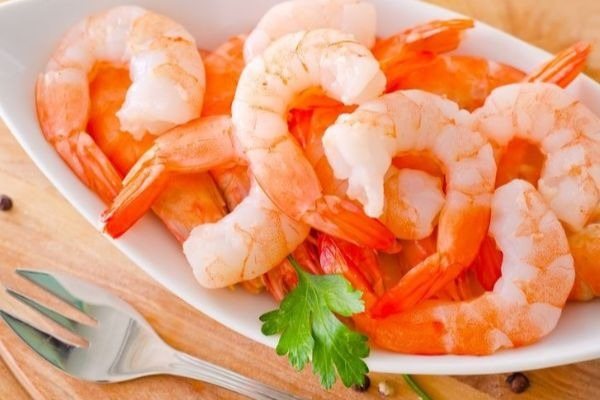
It is important to consider that the product is prepared exclusively by steaming or boiling and crushing. It is recommended to mix the delicacy with vegetable dishes and cereals.
In remission of chronic
When there is a persistent decrease in the signs of pancreatitis and there are no acute moments, then it is not necessary to chop the shrimp. It will be enough to boil it well, stew it, bake it, or add it to any dish - salad, side dish, soup.
Only after the condition has stabilized, if the patient tolerates the product well, then it is allowed to consume no more than 300 grams of meat. The protein present in meat has a beneficial effect on the synthesis of enzymes and accelerates the rehabilitation process.
For patients with pancreatitis, it is also worth following the recommendations for eating seafood.
- Only high-quality shrimp are included in the diet. There are no yellow or black spots or rings on the limbs, this indicates freshness.
- The delicacy is prohibited as smoked meat, pickles and canned food.
- When cooking shrimp, using sour and spicy dressings, sauces with vinegar, and citric acid is unacceptable.
- Do not include sushi that contains seafood meat.
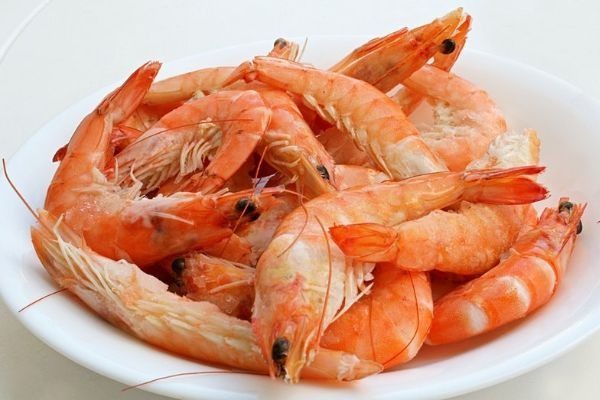
Also, you cannot exceed the permissible portion, which is 350 grams.
Seafood for pancreatic inflammation
Many lovers of crustaceans, when making a pancreatic diagnosis, are interested in whether or not they can eat crayfish.
The meat of crustaceans, like shrimp, has a delicate and unusual taste; moreover, it is considered a dietary food due to its content:
- Vitamin A complex, which helps improve the quality of vision, vitamin B12, which is very rare, as well as vitamins D, E, C and PP, which ensure normal growth and development of children from 3 years of age.
- Easily digestible protein compounds that help restore damaged tissue structures not only in pancreatitis, but also in cholecystitis, gastritis, cholelithiasis and other pathologies of the digestive system.
- Taurine, omega 3 and 6, as well as a high concentration of iodine and other beneficial microelements.
And it is also worth noting that all types of seafood can cause the development of food allergies, which means that shrimp, crayfish, lobsters, and other representatives of the seabed should be introduced into the diet with caution and with maximum attention to the reactions of the digestive system.
Bibliography
- Tyurina A., Fokina K. Recipes of the best chefs in Moscow. Fish and seafood. Publishing house "CHERNOVIK". 2004
- Efimov A., Kovalev V., Sharova T. Fish and seafood. Chef's library. Publishing house Restaurant Gazette. 2004
- Karpenko T. 1000 classic recipes. Cooking for everyone. Publishing house AST. 2004
- Poskrebysheva G. I. Dishes from fish and seafood 2005
- Poskrebysheva G. I. Cooking from seafood 2002
- Filippova V. A. Seafood dishes. Labyrinth Publishing House 2004
Therapy for any disease is accompanied by diet therapy, including cancer patients. A scientifically based and researched component of complex treatment measures is a diet for pancreatic cancer. A separate discipline of medicine has been identified - dietetics, and specialists involved in its application and study - nutritionists.
The basis of dietetics is considered to be fifteen different diets developed by the Soviet researcher Pevzner; the scientist’s works are still relevant today.
Diet No. 5
For pancreas cancer, diet No. 5 is considered fundamental. The diet should be divided. During the day, the patient is allowed to eat at least 5 times. Small portions of frequent meals do not create a strong load on the enzymatic secretory function. Especially during surgical treatment, liquid forms of food are often needed in small quantities.
According to the diet, the total energy content of foods in 24 hours should not exceed two thousand kilocalories.
Fat consumption per day should be limited to no more than 90 grams, including 30 grams of vegetable fats.
The daily amount of carbohydrates should be limited to 400 grams, of which sugar – no more than 80 g.
The protein content of the diet is within 90 g, 50-55 g is allocated to animal proteins.
Salt restriction – no more than 10 g per day, including in other products as a component.
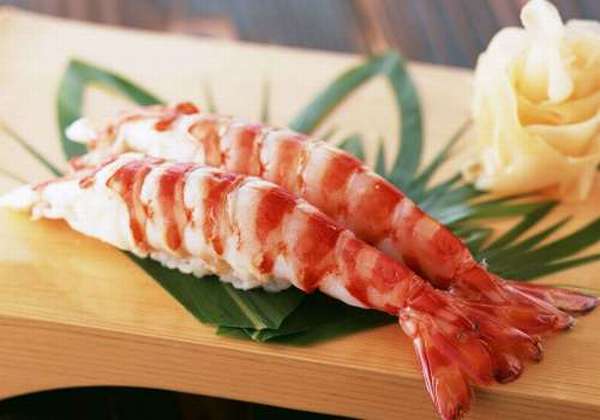
Liquid is limited to two liters.
Fried foods are completely excluded, especially those with crispy crusts, richly soaked in fats and oils, due to which the work of the liver and pancreas is significantly enhanced.
Spices and seasonings that increase gastric secretion, irritate stomach receptors, and maximize the load on the pancreas are completely excluded.
A strict diet allows you to achieve results that have a positive effect on the treatment of the disease:
- Elevated blood sugar levels are reduced;
- the patient’s general well-being improves;
- dystrophic processes are stabilized, the patient’s weight loss stops;
- the flow of fat and carbohydrates into the liver decreases;
- the enzymatic load on the digestive tract and pancreas is reduced;
- Dyspeptic symptoms are reduced and digestion is improved.
Acceptable products:
- Pasta, vermicelli, made from durum wheat.
- Dietary meat: rabbit, chicken, beef, horse, turkey. It is allowed to eat boiled or steamed.
- River fish (pike, perch, carp, pike perch) with minimal fat content and boiled, in one piece.
- Among dairy products, low-fat varieties of cottage cheese and non-acidic cheeses are acceptable. Milk is only used as an omelette component.
- Weak tea, still mineral waters, dried fruit compotes, fruit juices diluted with boiled water in a 1:2 ratio.
- Vegetable broths with pureed products, without adding spices, herbs and salt.
- Dried bread, crackers, not highly heat-treated.
- Oils of vegetable and animal origin.
- The only cereals allowed are buckwheat, semolina, oatmeal, and rice.
- Berries and fruits classified as non-acidic: figs, dates, dried fruits, bananas, sweet red apples.
Unacceptable products:
- You will definitely have to exclude pickled vegetables and fruits, especially those prepared using vinegar essence and industrial preservatives.
- The introduction of fried and baked foods into the diet is unacceptable. Kebabs, stews, pies, pancakes, pancakes, baked potatoes and other similar products are prohibited.
- Coffee, cocoa powder, and chocolate should not be consumed by patients with pancreatic cancer.
- Canned products should not be used in food preparation or in their original form. Stewed meat in metal and glass jars and canned fish are excluded.
- All types of alcoholic beverages with any percentage of alcohol are contraindicated. Light wines, champagne, liqueurs and aperitifs have a very detrimental effect on the secretory function of the already suffering pancreas.
- All types of fatty meat and fish products are excluded. Pork, lamb, camel meat are strictly contraindicated.
- Meat by-products are removed from the diet: heart, liver, kidneys, lungs, intestines and stomach of animals. They should not be eaten in any form of preparation.
- Sour fruits and vegetables are prohibited. These include: lemon, green apples, tangerines and oranges, grapefruit, pineapple, plums, gooseberries, grapes, pomegranate, cranberries.
- Sweets, marmalade, ice cream and many other sweets are contraindicated for pancreas tumors. Artificial sugar substitutes are also not recommended for consumption.
- Mushrooms must be categorically excluded from the diet of those suffering from pancreatic cancer.
- Radishes, radishes, sorrel, onions, spinach, cauliflower are excluded from the list of permitted products.
According to diet No. 5, a system of approximate menu layouts has been developed for daily food preparation using permitted food products. The recipes were developed by nutritionists based on many years of research.
Option one. For breakfast, meatballs are prepared from lean meats, but exclusively steamed. The side dish is buckwheat or semolina porridge, tea with a minimum sugar content, no more than 1 teaspoon per 150-200 milliliters. For second breakfast, the patient is given a sweet apple, possibly grated on a coarse grater.
Lunch is vegetable soup, without herbs and spices. Chop made from dietary meat. Dried fruit compote without the use of sweeteners or flavor enhancers. The afternoon snack consists of rye bread crackers and tea in a volume of 150 milliliters. For dinner, prepare a salad of figs, beets, and walnuts. Tea with crackers or biscuits (cookies made from non-yeast dough).
Option two. For breakfast, low-fat cottage cheese is served with preferably low-fat sour cream, with the addition of a teaspoon of honey. Oatmeal is prepared exclusively with water. Tea with a minimal amount of sugar added, it is advisable not to add glucose at all. The second breakfast is a fruit puree of banana and apple.
For lunch, vegetable soup is prepared, and for the second course, steamed chicken with a side dish of boiled rice. Dried fruits compote. The afternoon snack consists of a rosehip decoction and three biscuits. For dinner, boiled non-red fish and mashed potatoes are prepared. Tea without sugar and Lenten cheesecake. Before going to bed, it is possible to give the patient 100 milliliters of low-fat kefir.
Option three. Breakfast consists of fruit jelly with omelette, two biscuits. For second breakfast, a curd soufflé is prepared. Lunch consists of buckwheat soup for the first course, and a boiled piece of carp meat with pasta for the second course. Both dishes are served warm at a temperature no higher than 40 degrees.
With pancreas cancer, a complication such as dysphagia is likely to occur, and the patient cannot swallow food on his own. When it develops, tube feeding is used. A nasogastric tube is inserted into the stomach through the nasal passages. Food is supplied with a large syringe under slight pressure.
The products must be ground in a blender and compatible with each other. The food temperature is maintained within 38 degrees. If the food is too hot, irritation of the stomach walls will occur and an additional increase in the secretory activity of the pancreas.
The volume of food introduced is no more than 300-400 milliliters. When undergoing surgery for pancreatic cancer, which also involves the stomach, the volume of food administered will need to be reduced to 250-300 milliliters. Probe administration should be carried out fractionally, in small portions, for 15-30 minutes.
The diet of food during tube feeding does not change; only the rules of grinding and homogenizing food are observed.
In the case of tube feeding, the use of special nutritional mixtures is allowed. Factory-produced products for tube feeding are available in a wide variety. When choosing a manufacturer and product, you first need to consider a number of important points:
- No or minimal sugar content in the mixture. Special diabetic mixtures from the Nutrichem group are suitable: Nutrozim, as well as Nutricomp diabetes and Nutrien diabetes. Other mixtures for tube feeding are used for diabetes mellitus.
- Special mixtures are used for insufficiency of digestion and enzymatic functioning of the pancreas. These include Nutrien Elemental, Modulen IBD, Peptamen.
Recipes for dishes with shrimp for pancreatitis
We bring to your attention several healthy recipes.
To make the soup you need 350 grams of seafood. It will take 7 minutes to cook the shrimp after the water boils. Then boil 2 potatoes and 200 grams of zucchini in milk, which is diluted with water in a ratio of 1:1. Send the cooked meat to the boiled vegetables and grind with a blender.
For the dish you need to boil 300 grams of shrimp and then chop them. Send the meat to 200 ml of low-fat milk and 1 egg. All components are mixed well. Grease the mold with vegetable oil and send the mixture into it. Cook in the oven for 25 minutes at 180 degrees.
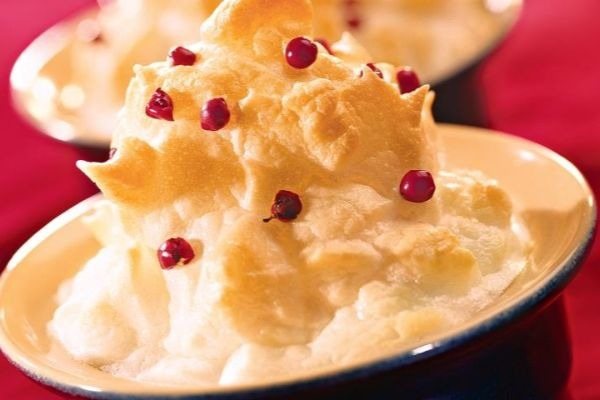
Grind boiled 300 grams of seafood meat, combine with 4 boiled quail eggs, cut into cubes. Grate 60 grams of Adyghe cheese, chop the fresh cucumber using a coarse grater. All components are mixed and seasoned with a tablespoon of sour cream.
Shrimp are good for the body, but in case of pancreatitis, intake is possible after visiting a doctor, who, based on the stage of the disease, the course and general condition of the patient, will approve or refuse the intake of seafood.
Dish recipes
For pancreatitis, shrimp meat is consumed both as a separate dish and as part of various dietary dishes - soups, salads, side dishes, etc. To prepare a tasty and healthy soup that will saturate a weakened body with nutrients, you will need the following ingredients:
- 2-3 potatoes;
- 1 zucchini;
- 300 g shrimp;
- 300 ml milk;
- 200 ml boiled water;
- a pinch of salt.
The cooking process consists of the following steps:
- Potatoes and zucchini are peeled and chopped on a coarse grater.
- The shrimp are washed and chopped, passing through a meat grinder.
- Water and milk are poured into a saucepan and brought to a boil over low heat.
- After the liquid boils, add salt and vegetables and cook for 15 minutes.
- When the vegetables are ready, add shrimp to them and keep on fire for about 5 minutes.
You can also prepare a delicate dietary salad from the following ingredients:
- 250 g shrimp;
- 8 quail eggs;
- 100 g low-fat cheese;
- 1 cucumber;
- 2 tbsp. l. low-fat sour cream or natural yogurt.
To do this, do the following:
- Pour boiling water over the shrimp and cook for 7 minutes.
- The eggs are boiled and cut into small cubes.
- The cheese is grated on a coarse grater.
- The cucumber is peeled and grated. You can also cut it into thin strips.
- All ingredients are combined, seasoned with sour cream or yogurt and mixed well.
Shrimp meat can be introduced into the diet for pancreatitis only after consultation with your doctor.
Pancreatitis is a disease characterized by inflammation of the pancreas. In order not to provoke a deterioration in the patient’s condition, as well as to protect yourself from the problem under discussion, you will need to carefully monitor your diet. The patient must adhere to a dietary diet. Each product that goes into it must be assessed in terms of usefulness and safety for the body. For example, fish and seafood are very healthy for a healthy person. But with pancreatitis they should be used with caution.

